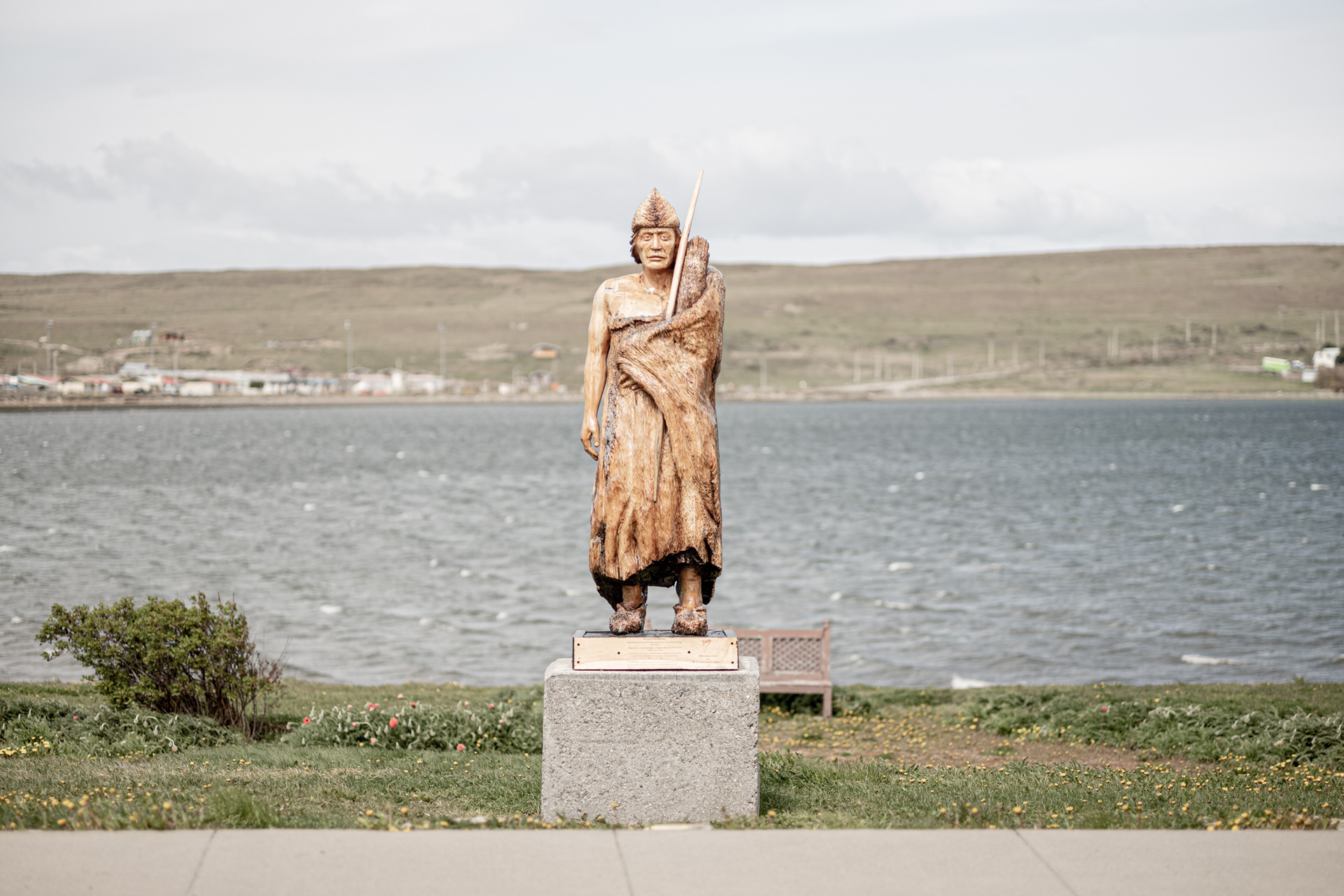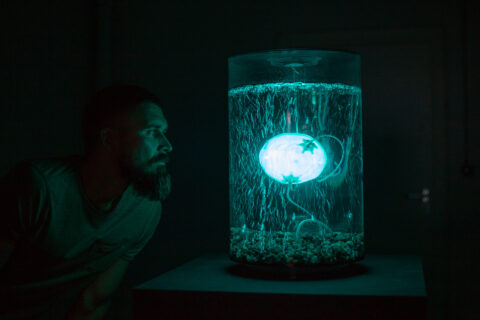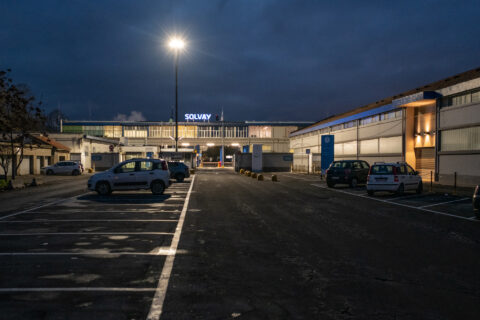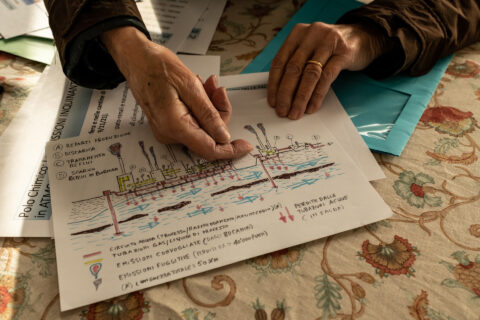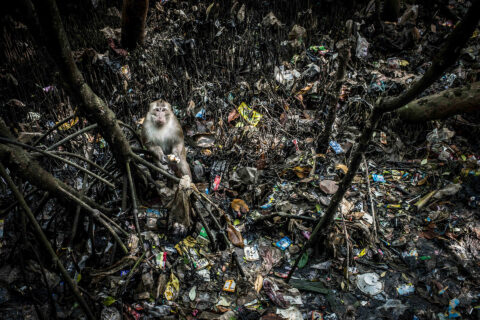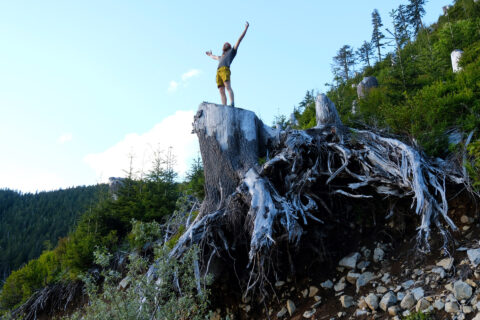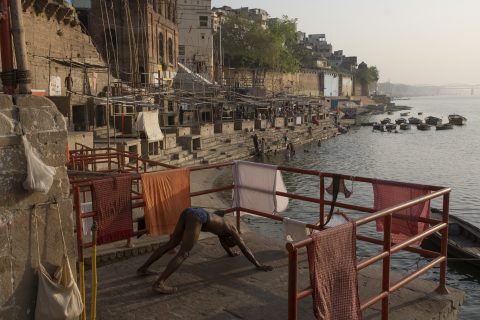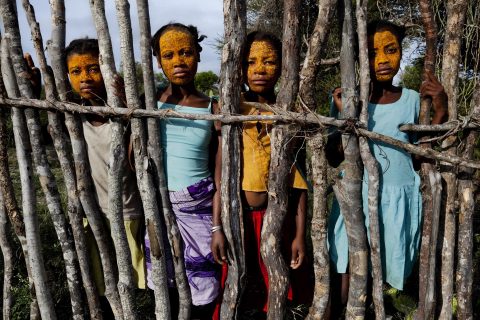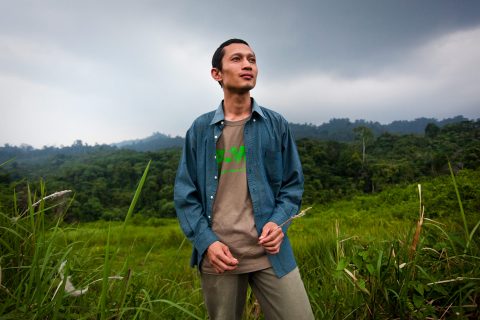Just over 500 years ago, Portuguese navigator Ferdinand Magellan, leading an expedition from the Kingdom of Spain, discovered a sea passage in the south of the planet, a region unknown to Europeans, who called it Terra Australis Incognita. The discovery united the world in the first globalization of modern society.
Groping for a passage to the Indies, the expedition, commanded by the explorer aboard the vessel Victoria, was already below latitude 52º S when, under the fog, bonfires were sighted on the coast of South America. It was the first sign of human presence. The navigators did not know it, but that land was called Karukinka (Our Land) and the fires were lit by the Selk’nam people (also known as Ona) to face the cold and cook food.
The Selk’nam had arrived there more than ten thousand years ago as a result of our species’ great adventure across the planet, a journey of at least 60,000 years that started at East Africa Rift Valley and along which humans spread throughout and found there the last land – finis terrae – the last continental frontier.
European farmers and Selknam hunters
Hundreds of years after Ferdinand Magellan, in the 19th century, other Europeans and their descendants would arrive – this time to stay. They were farmers, bringing the culture of domesticated plants and animals, and Salesian missionaries. The outsiders found groups of hunter-gatherers living nomadically in that wild and inhospitable environment of short summers and long winters. The meeting between European farmers and hunter-gatherers meant the death sentence of the latter. A genocide that, in twenty years, brought about the almost complete extermination of the population of Tierra del Fuego. Almost.
Tierra del Fuego is an archipelago of Patagonia separated from the South American continent by a strait, known today as the Magellan Strait, which connects the Atlantic to the Pacific Ocean (so named by Ferdinand Magellan) – and which have united the world. The name Tierra del Fuego (Land of Fire) was also given by Magellan in 1520, when he saw the flames and smoke of natives’ many bonfires from his vessel on the coast of Isla Grande, the main island of the archipelago. Leading a Spanish expedition, Magellan was the first European to reach those windy lands.
Long before Tierra del Fuego was divided between Argentina and Chile (in a treaty signed in 1881) several adventurers tried to occupy Karukinka. First they were looking for gold. They brought germs that caused epidemics of tuberculosis, syphilis and respiratory infections – the same biological weapons that hit and decimated other Amerindian peoples. It was the beginning of the end. Then came the mass arrival of European, Chilean and Argentinian farmers who saw Karukinka as the perfect place to raise sheep for the production of wool and meat. They invaded and seized the territory that was occupied by the Selk’nam, Tehuelche, Yagane, Haush and Kawesqar groups, between Patagonia and Tierra del Fuego.
The invasion cost the Selk’nam their land and the freedom of their nomadic culture, but at the same time they realized that it was much easier to hunt a domesticated sheep than a wild guanaco. This, of course, would not be accepted by the farmers’ culture, who saw in private property the leap to progress – although it cannot be proved that such a lifestyle had brought us closer to happiness.
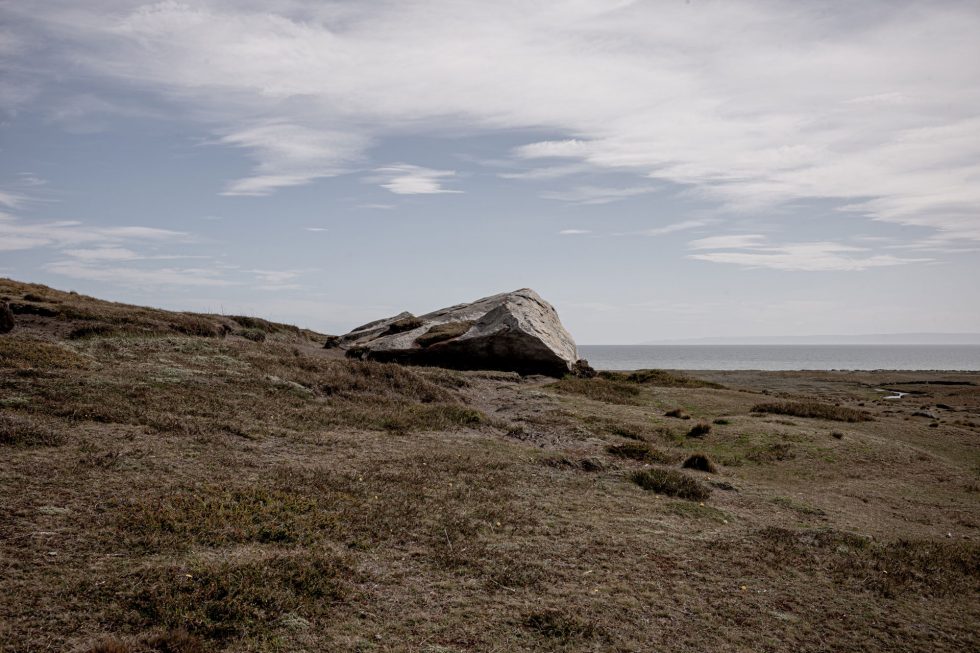
Located in Bahía Inutil, one of the most important archeological sites is the Pedra de Marazzi, recognized as one of the oldest settlements on the island, reaching 9,500 years. Here were found lithic instruments and other evidence of the presence of hunting groups of birds and guanacos. Tierra del Fuego, Chile, 2021.
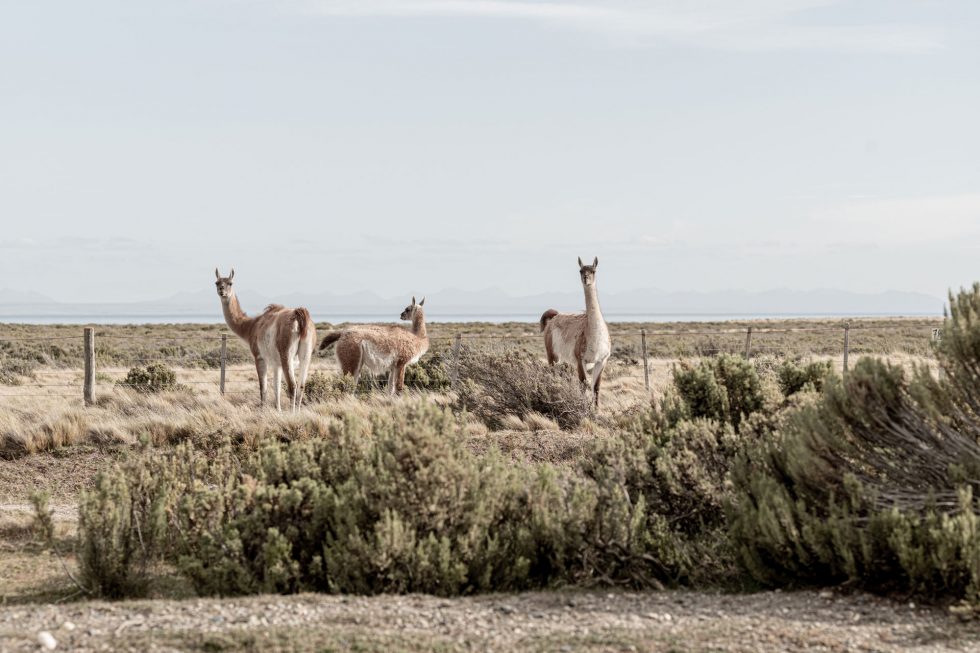
The guanaco (Lama guanicoe) probably arrived in the Tierra del Fuego along with the Selk’nam, crossing a strip of earth that connected the island to the mainland. Tierra del Fuego, Chile, 2021.
The Selknam genocide
The coexistence between farmers and hunter-gatherers was impossible. The newcomers decided to eradicate the Selk’nam population in order to take hold of all the land and hired bounty hunters. These would cut off the ears of Selk’nam caught hunting sheep and take them to the farmers as proof of “job done” to receive payment. Selk’nam repeat offenders would have their heads cut off. Naturally, there was a reaction, and the Selk’nam killed the farmers they managed to reach with their arrows.
It was an unbalanced conflict, and soon the Selk’nam men were exterminated. Elderly people, women and children were captured and sold as domestic servants or sent to Salesian missions in Rio Grande (Argentine sector) and Dawson Island (Chilean sector) to be “civilized”. Women were repeatedly raped and forced to marry non-natives. Diseases, malnutrition, evangelization, loss of culture and separation from families decimated the population. Only young children remained. When the farmers arrived, there were about four thousand Selk’nam; in 1930 there were just over a hundred. The Selk’nam were reported extinct in the history books and laws written by the victors.
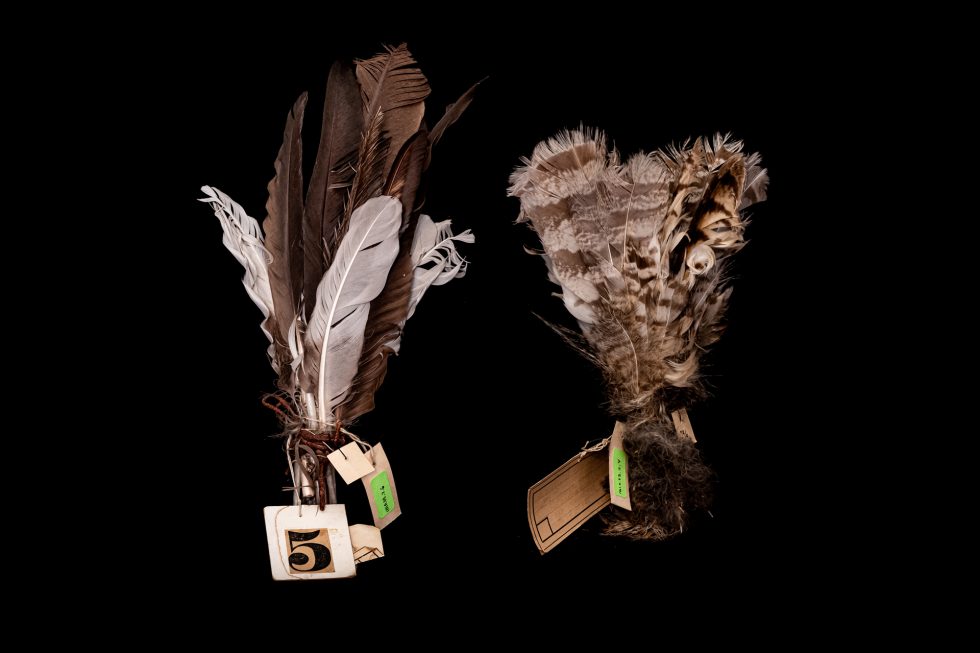
Owl feather bows. If a Selk’nam saw the boss with this bundle of feathers, they prepared to fight. This and the following artifacts are exhibited and belong to the Maggiorino Borgatello Museum, Punta Arenas, Chile. Punta Arenas, Chile, 2021.
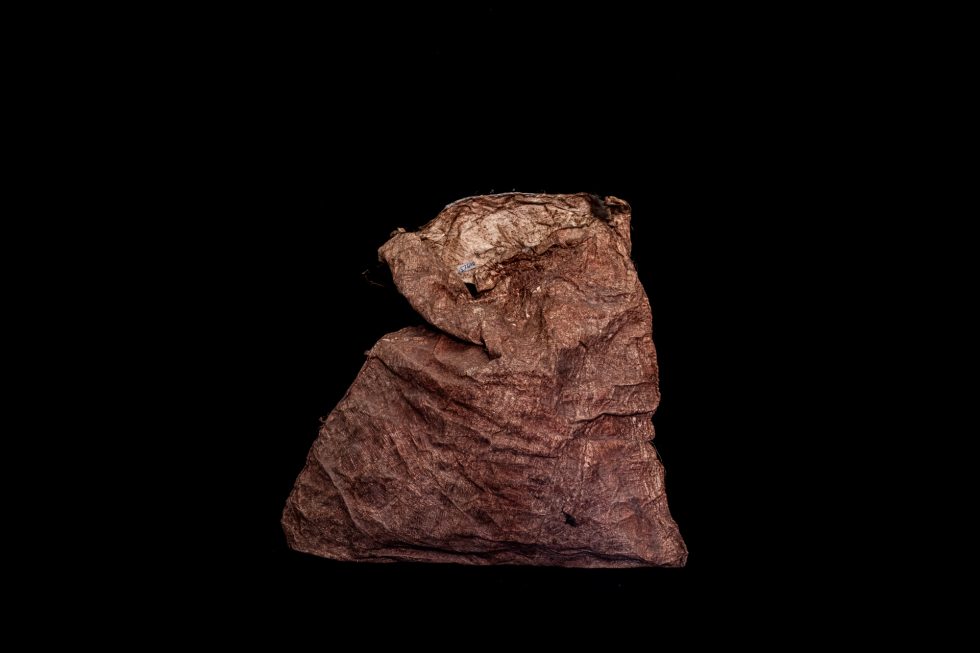
Bag used by the Selk’nam made of guanaco leather.
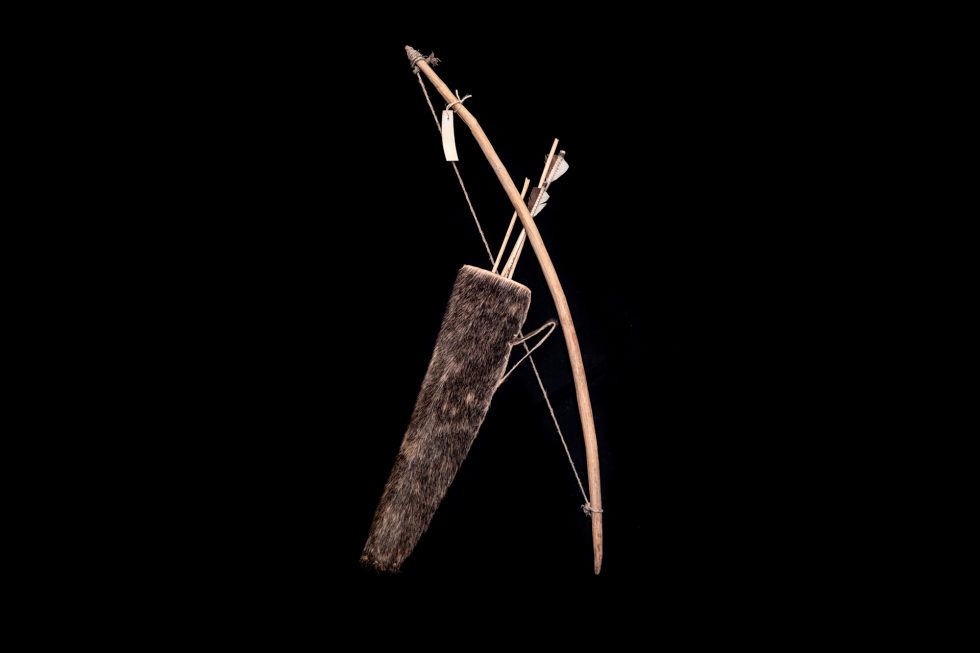
Toy bow and arrows in a pouch made of guanaco leather. They were used by children to play and acquire hunting skills.
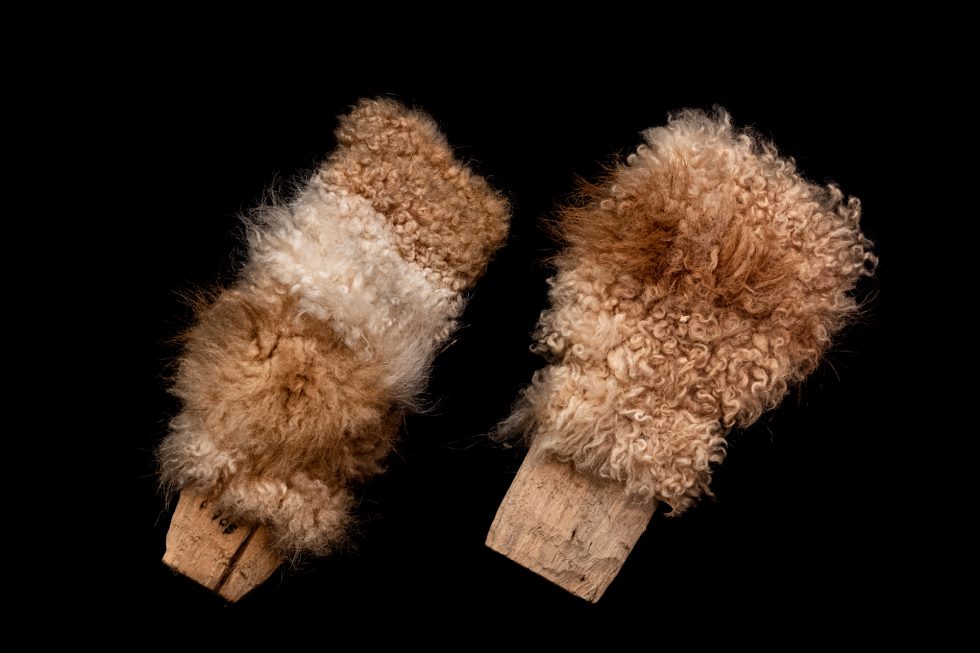
Wood scrapers coated with guanaco leather. They were used for making clothes and coverings for the huts.
Salesian’s accounts describe the Selk’nam as a people of incredible abilities. They were able to see far beyond what Europeans could see even with binoculars. They were also endowed with phenomenal hearing ability. They easily learned other languages, exhibited far above-average creative ability and a talent for painting and drawing. Their imagination developed admirable stories and religious culture. Furthermore, they were admittedly kind and amiable.
Rewriting history
A century – and dictatorships – has passed with the Selk’nam genocide not being addressed. This began to change only recently, in the 2010s, due to the Internet, where users looking for their origins found each other. Now, together, the Selk’nam face the process of rewriting official history, decolonizing and denaturalizing the historical perspective, recovering and reframing what happened. They created community centers where families’ experiences, stories and memories are shared and the truth is confronted. The Selk’nam are organized in entities such as Corporación Selk’nam and Comunidad Covadonga-Ona, both in Chile, and Comunidad Rafaela Ishton, in Argentina, to fight for their rights – starting with the recognition that they still exist, that they have not gone extinct. That they are a living people.
Comunidad Rafaela Ishton exists since the 1980s and was one of the first to obtain legal jurisdiction in Argentina. In 1994, the Selk’nam were recognized as an indigenous people by the Argentine State. More than 600 families, totaling about a thousand people, identify themselves as Selk’nam in the country.
In Chile, Corporación Selk’nam gained legal jurisdiction in 2015. The organization has more than fifty members and their families, totaling about two hundred people. According to the 2017 Chilean census, 1,144 people identified themselves as Selk’nam; however, the Chilean State does not recognize the existence of the Selk’nam as a people. Corporación Selk’nam fights for the inclusion of the Selk’nam in the list of “main ethnic groups” recognized by the Indigenous Law 19,253, of 1993.
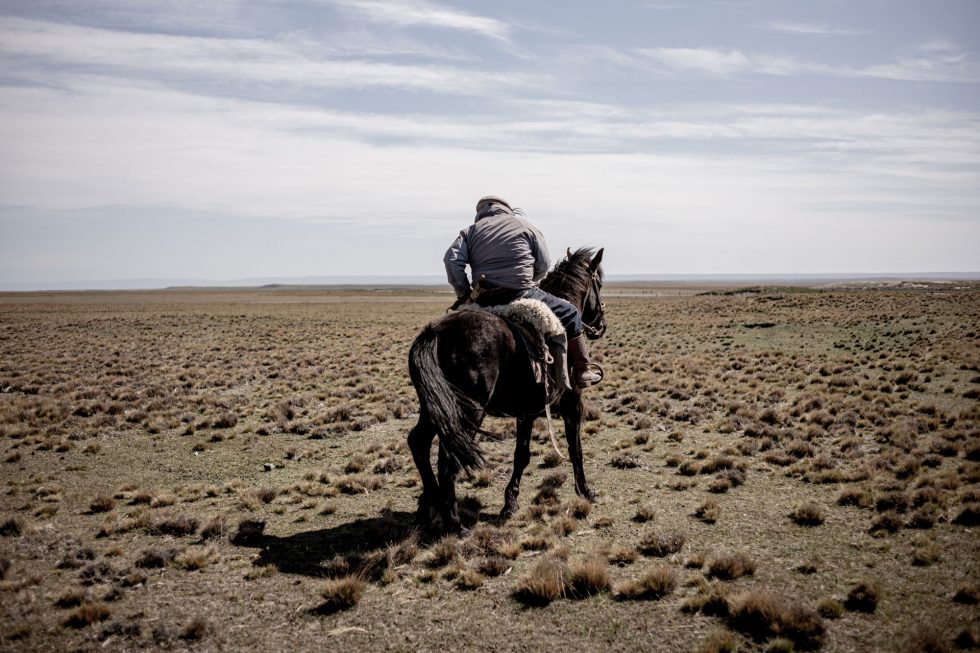
The Europeans brought horses and sheep. The way of life that required large areas of land caused conflict with the Selk’nam. Tierra del Fuego, Chile, 2021.

Society Ganadera Gente Grande, according to recent surveys, was the first farm to be founded on Tierra del Fuego, in 1883. Here began the conflict between the Selk’nam and the farmers. The house also had a small port for the ships. Some Selk’nam were taken to Europe to be exhibited in human zoos. Tierra del Fuego, Chile, 2021
A journey of self discovery
Hema’ny Molina, president of Corporación Selk’nam Chile, and Miguel Pantoja, member of Comunidad Rafaela Ishton, do not accept being seen as Selk’nam “descendants”. “I am not a descendant, I am Selk’nam,” says Pantoja. “Having to explain myself, to think myself, is something violent,” he says. Molina agrees and adds: “I always knew I was Selk’nam, but that didn’t mean living as such or understanding how to do it. There are several complex layers. For many years there was a feeling of loneliness, as we were unaware of other families’ existence. It was a feeling of emptiness and total loneliness. Who am I going to talk to? Who am I going to tell? Will people believe me?”
Over the past decade, many Selk’nam had undertaken emotional and physical journeys to learn and recognize the tragic history of their ancestors. It’s not an easy path. “Our first glimpse as Selk’nam is always painful because what is told in history books is not the history we know. Most of us go through a spiritual quest to fill the void, the feeling of not fitting in, of belonging nowhere, until we find our culture. The answers are there, even though we are not in Tierra del Fuego,” says Hema’ny Molina, who lives in Santiago, Chile.
You want to read more indigenous, underreported stories?
Subscribe to our newsletter (in Italian).
Most Selk’nam live far from Patagonia, in Chilean cities (Santiago, Valparaíso, Villa Alemana, Valdívia, Arica) and abroad (Sweden, United States and Canada) since the surviving children were taken away from Tierra del Fuego. There is a lot to discover. They have the help of researchers from Universidad Católica Silva Henríquez and Universidad de Magallanes. Alejandro Núñez Guerrero, director of the Centro Universitario de la Universidad de Magallanes in Porvenir (Chile), has been forging agreements for more field research – it was recently discovered that the settlers’ first ranch was built on the Chilean side and not on the Argentinean side, as it was imagined – and for the Selk’nam to be more present in Tierra del Fuego. All this is fundamental in the recognition process.
The genocide deeply marked the few Selk’nam who remained in Patagonia. Survivors raised their children without emphasizing their ethnicity. That was the case of Miguel Pantoja’s great-grandmother. “To protect subsequent generations, the elders did not transmit the language. That’s why I don’t speak the Selk’nam language,” says Miguel, who lives in Rio Grande, on Tierra del Fuego’s Isla Grande. Even today, the inhabitants of Isla Grande do not assume the Selk’nam ancestry. “The stigma of death was so strong that the Selk’nam did not want to be indigenous; thus, they raised their children with non-indigenous criteria,” says Hema’ny Molina. Denying ethnicity was a way to survive.
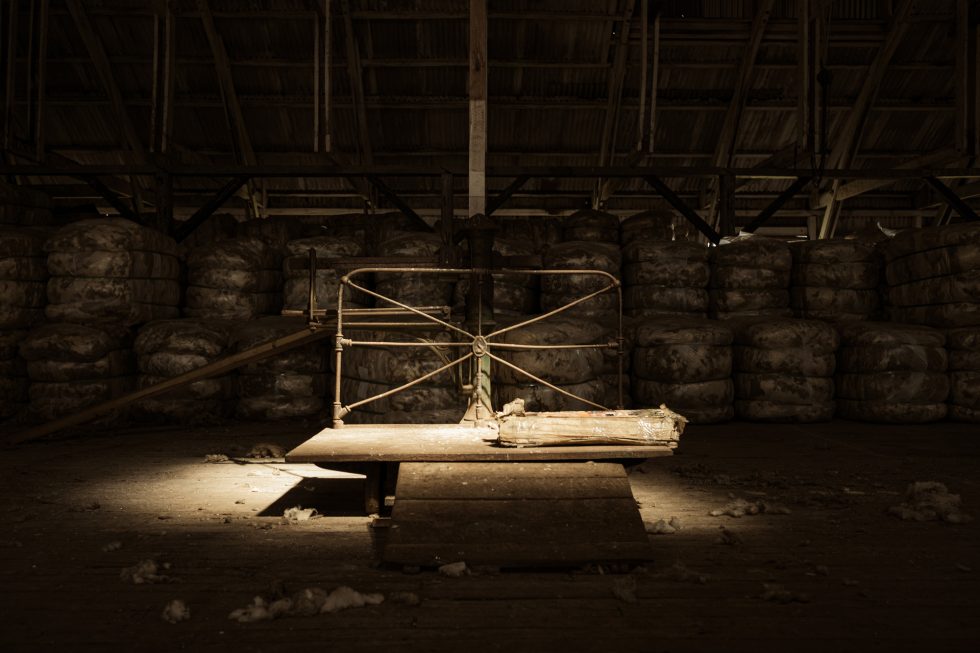
An ancient scale for weighing sheep’s wool. The occupying force had a clear motive: the raising of sheep. Farmers invaded fishing, hunting and collecting Selk’nam’s territory. Tierra del Fuego, Chile, 2021.
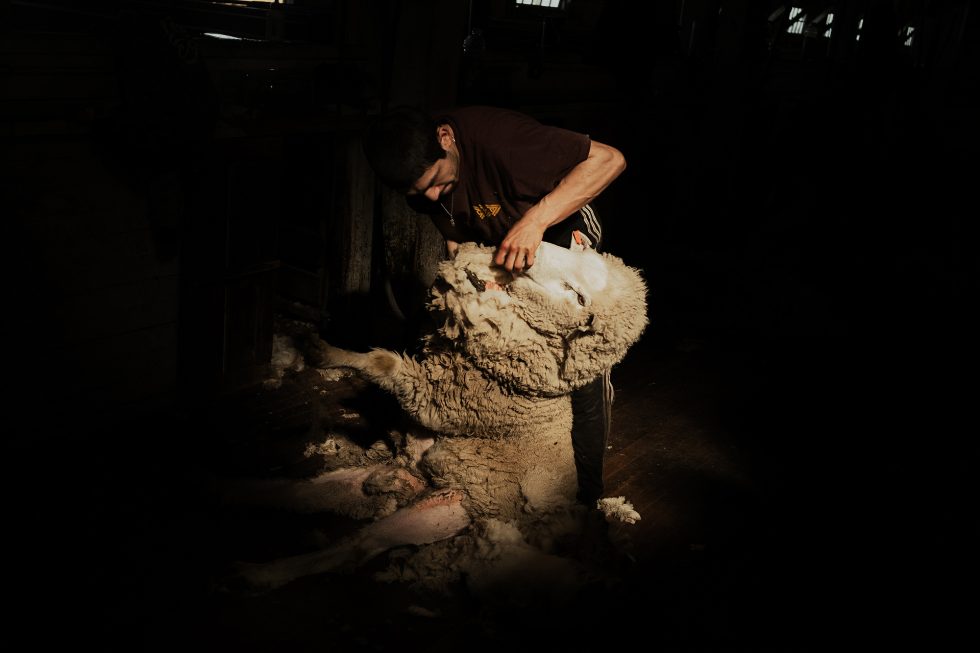
A worker shears a sheep. The wool produced in Tierra del Fuego and Patagonia is considered the best in the world. Tierra del Fuego, Chile, 2021.
The fight for legal recognition
Hector Chogue, former vice president of the Comunidad Covadonga-Ona, and his brother José Luis Vásquez Chogue, secretary of Corporación Selk’nam, have been on a personal search for more than thirty years. Only three years ago they found out they were Selk’nam, when they saw their grandfather’s name in one of the Salesian birth records on Dawson Island.
The recent journey of self-discovery as Selk’nam has also become a tour of endless meetings with Chilean politicians to incorporate the Selk’nam into Indigenous Law. The main objective is to have them known as alive Selk’nam, contrary to what is still taught. “It’s hard to say who I am, because the State doesn’t recognize us,” says José. The Selk’nam expect the recognition to early 2022, the deadline given by the Chilean State to the community to prove that it is alive.
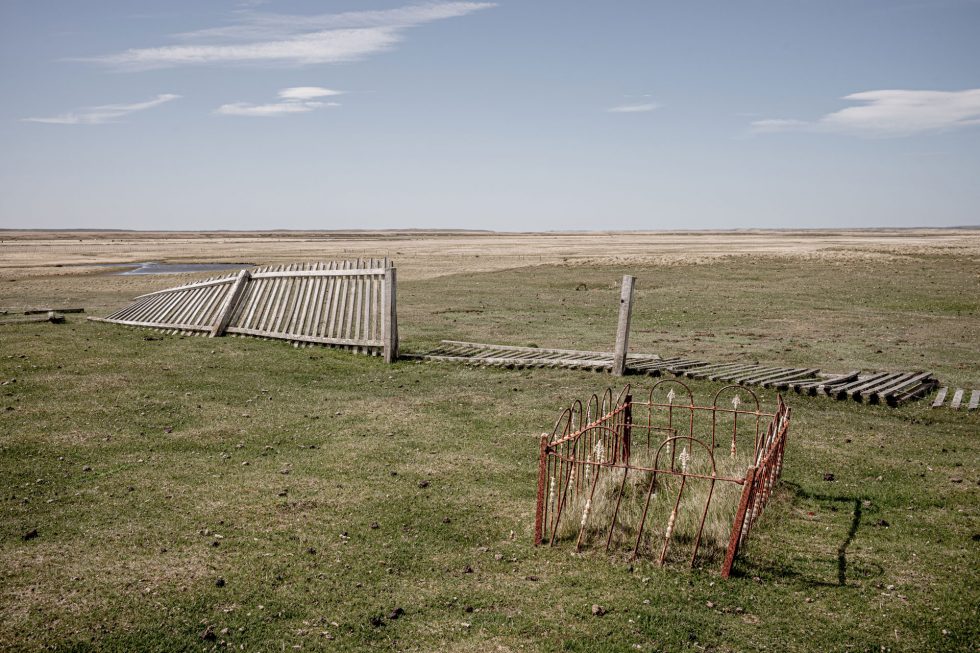
The Cemetery of Onaisín, also known as the Cemetery of the British or of the Settlers. The cemetery belongs to the residents and settlers of the “Caleta Josefina” resort of the Sociedad Exploradora da Tierra del Fuego and is now a historical monument in Chile. Here are buried some of the farmers who were killed by the Selk’nam during the conflict. Tierra del Fuego, Chile, 2021.
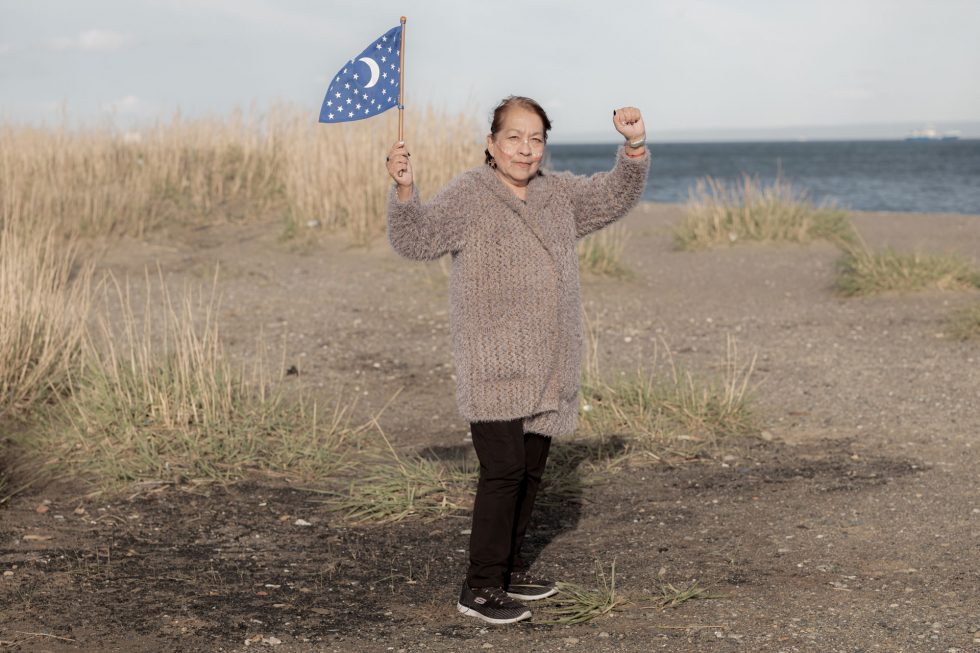
On the banks of the Strait of Magellan, Maria Margarita Vasquez Choque (Pilar) proudly holds the flag that represents the Selk’nam and raises her fist as a sign of struggle and resistance. Originally, they did not have flags. It was created by the children and women who were under the care of the Salesian mission on Dawson Island, Chile. The Selk’nam believed that when they died, they became stars. Punta Arenas, Chile, 2021.
In the meantime, Hector, José, and many others are learning to be Selk’nam. José was in Tierra del Fuego for the first time in October 2021. “It was an emotion and energy that I had never experienced. I tried to see and experience the place with my grandfather’s eyes,” he says. The Chogue brothers and their family learned a few years ago that their surname is of French origin, coming from the man who, in the 1840s, adopted their grandfather, baptized by the Salesians as Carmelo. “What happened to the Selk’nam cannot be forgotten by Chilean society,” says Hector. As for the near future, he and other Selk’nam are prepared to stop being anonymous and to be seen: “We have the responsibility of turning our culture visible.”
Now, wanting to be recognized as Selk’nam does not mean wanting to be seen as the indigenous people of the past or as museum piece. Selk’nam seek their identity as modern, integrated people on a journey to reconstruct family histories. For the 21st century, Hema’ny Molina is interested in the truth as it is, with no romantic notions. “People want to see us as before, but we have grown up like everyone else, we have cell phones, computers, jobs, we pay taxes, we stick to work hours,” she says. Miguel Pantoja reinforces the need for people to abandon racial stereotypes: “In spite of everything, we have not died, but we have changed. We are alive and present in our land.”
This project was supported by the Pulitzer Center on Crisis reporting.
